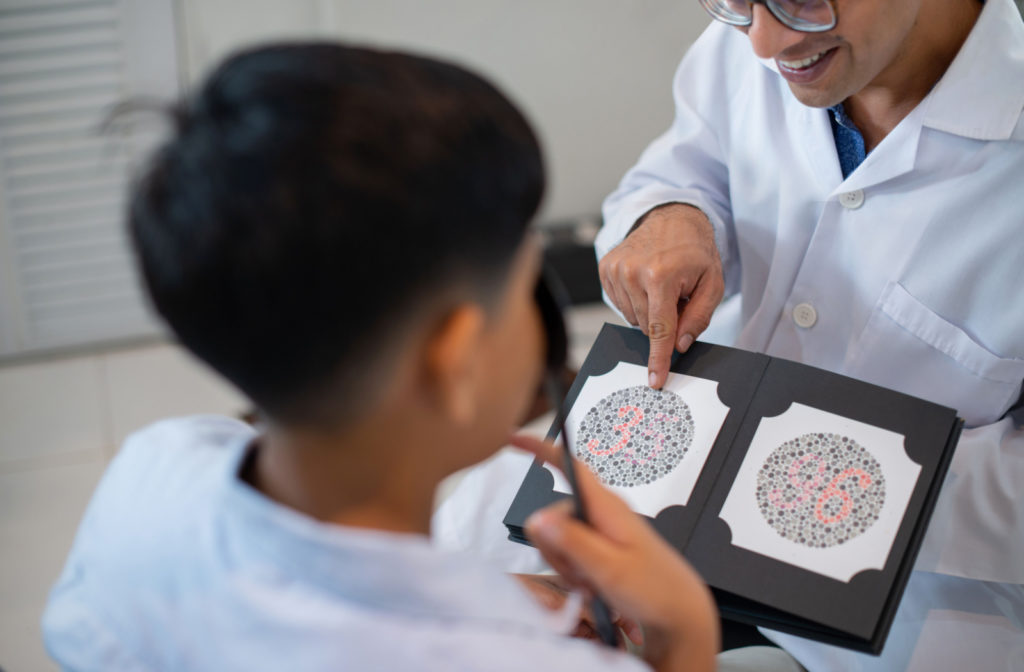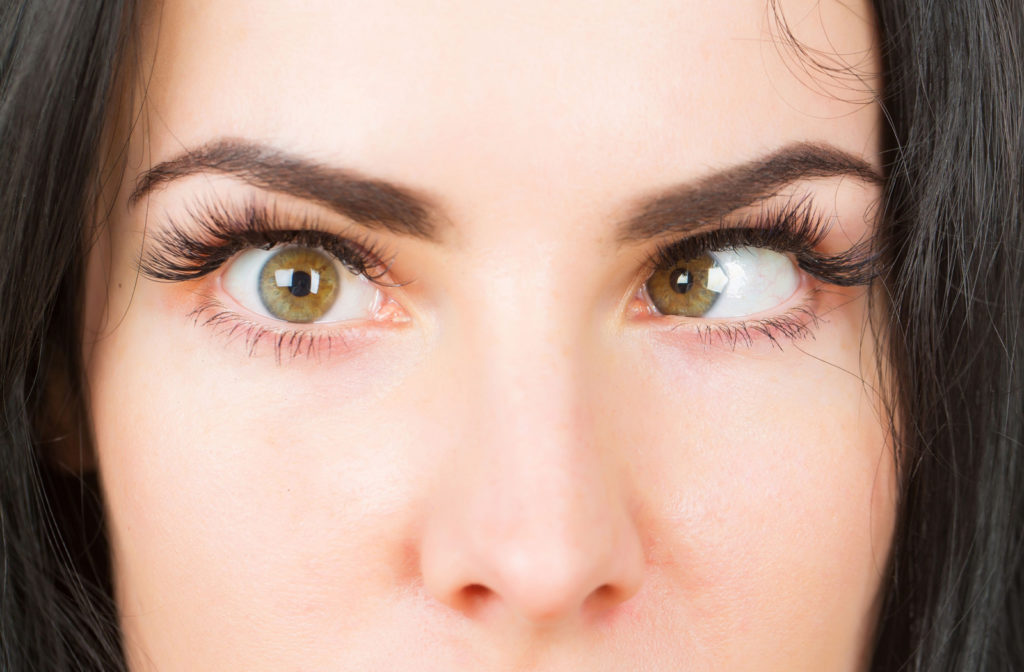If you’ve ever wondered why some people suffer from eye diseases while others don’t, the answer may be found in genetics. Many eye problems are hereditary, and while some can be prevented or treated, others can result in vision loss or even blindness.
Luckily, understanding the various types of hereditary eye diseases and how to prevent them can help protect your vision for years to come. These include:
- Age-related macular degeneration (AMD)
- Glaucoma
- Cataracts
- Retinitis pigmentosa (RP)
- Color blindness
- Myopia (Nearsightedness)
- Stargardt disease
- Amblyopia (Lazy eye)
- Strabismus (Crossed eyes)
- Diabetic retinopathy
The first step to preventing any kind of hereditary eye disease is watching for the signs, and your optometrist can help with regular eye exams. So don’t forget to stop by!
1. Age-Related Macular Degeneration (AMD)
AMD is a progressive condition that affects the macula, the central part of the retina, and the light-sensitive layer of tissue in the back of the eye. Though the exact cause is unknown, it’s believed to be linked to genetics, lifestyle factors, and aging.
Symptoms include blurred or distorted vision, which can lead to permanent vision loss if left untreated. Depending on whether it’s “dry” or “wet” AMD, vision loss can be slow and take several years (dry) or incredibly rapid (wet).
If you have a family history of AMD, you can lower your risk through early detection and lifestyle changes, such as:
- Quitting smoking
- Maintaining a healthy diet
- Get regular physical activity
- Control your blood pressure & cholesterol levels
2. Glaucoma
Glaucoma is a group of eye diseases that damage the optic nerve, leading to vision loss and blindness if left untreated. Some forms of glaucoma are hereditary, such as primary open-angle glaucoma, which affects 3 million people in the United States alone.
Early symptoms can be invisible, leading to its nickname, the “Silent Thief of Sight.” Dilated eye exams are essential to uncover glaucoma early. However, maintaining a healthy weight, staying physically active, and avoiding smoking can also help prevent vision loss.
3. Cataracts
Cataracts are a common eye condition that cloud the eye’s natural lens, leading to blurry vision and sensitivity to light. They’re a natural part of aging, though genetics can cause you to develop them early. Surgery is the go-to treatment when cataracts severely affect one’s vision.
To help prevent cataracts, wear sunglasses with UV protection, avoid smoking, and make healthy food choices.
4. Retinitis Pigmentosa (RP)
RP is a rare inherited disease that affects the retina, causing the degeneration of cells and leading to vision loss. It typically starts with night blindness and loss of peripheral vision but could eventually result in complete blindness.
People are born with RP, and the first symptoms typically present in childhood. Though there is no cure, early detection can help eye doctors make recommendations. Low vision aids and training programs can help people make the most of their vision, while some evidence points to vitamin A, fish oil, and lutein supplements.

5. Color Blindness
Color blindness is a genetic condition that affects the ability to distinguish certain colors. It is caused by an abnormality in the photopigments found in the eye’s cone cells. Fortunately, color blindness doesn’t typically cause any harm to the eyes or general health. Most people adjust to it and seek accommodations or visual aids for everyday tasks.
6. Myopia (Nearsightedness)
Myopia is a common vision problem that causes distant objects to appear blurry while close-up objects remain clear. It often runs in families and can lead to other eye problems like glaucoma and retinal detachment. It usually first presents in children and can worsen if not properly managed.
While genetics play a role, environmental factors like excessive screen time and not enough time outdoors can also increase your child’s risk. Corrective lenses can offer clear vision, though specialized myopia control treatments can slow myopia’s progression and help children avoid high myopia.
7. Stargardt Disease
Stargardt disease is a rare genetic condition that occurs when fatty materials damage the macula, leading to vision loss, particularly in the central field of vision. Unfortunately, there is no cure for Stargardt disease. Still, you can slow down its progression by avoiding smoking, wearing sunglasses, and limiting your intake of vitamin A to the daily recommended amount.
8. Amblyopia (Lazy Eye)
Amblyopia typically occurs in early childhood and happens when one eye is weaker than the other, leading the brain to rely more heavily on the stronger eye and eventually causing the weaker eye to deteriorate.
Early children’s eye exams can help uncover this imbalance before too much damage is done. Your optometrist can help your child train their brain to use the weaker eye and avoid lifelong vision problems.
9. Strabismus (Crossed Eyes)
Strabismus, sometimes known as crossed eyes, is where the eyes don’t align correctly, leading to double vision or amblyopia. Typically, you can visually tell if an eye is turned, but sometimes, it only happens when focusing on something at a certain distance.
While you can’t prevent strabismus, you can avoid complications by detecting it early enough. Early treatment with vision therapy often yields excellent results.
10. Diabetic Retinopathy
Diabetic retinopathy is a complication of diabetes that occurs when high blood sugar levels damage the blood vessels in the retina. It can lead to blindness if left untreated.
Diabetes can affect your eyes in many ways, so to prevent diabetic retinopathy and other diabetes-related eye issues, it is important to tightly control your blood sugar levels by following your doctor’s recommendations.
Proactive Vision Care in San Clemente
While hereditary eye diseases may seem daunting, understanding their causes and treatments can help prevent vision loss. Regular eye exams and lifestyle changes are some of the simplest steps to help detect and manage these conditions.
Protecting your vision starts with knowledge and prevention, so choose proactive care for your family by booking your eye exam today with San Clemente Optometry. You are more than your genetics, so let’s look beyond hereditary eye diseases together!




